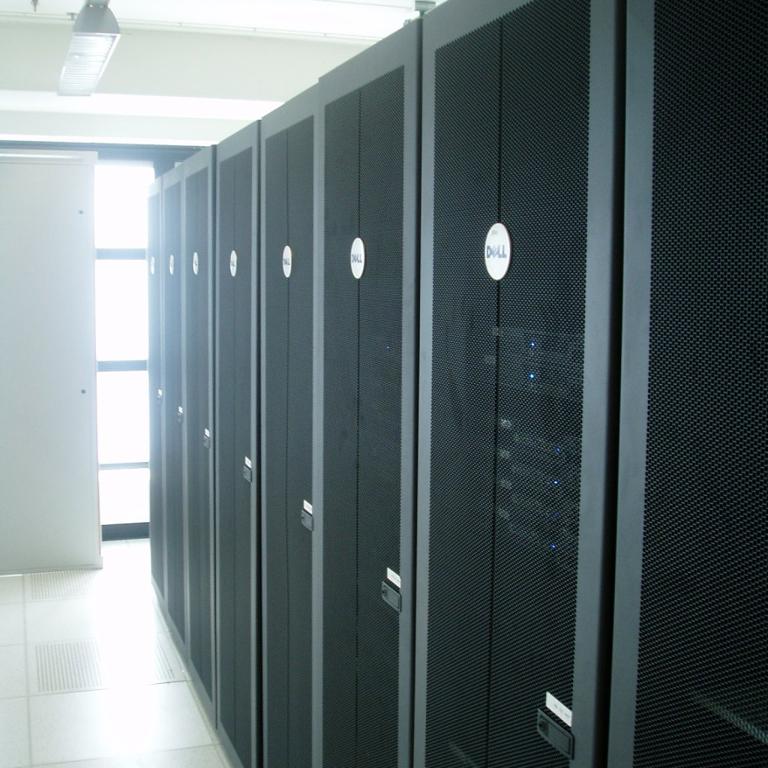 Driven by that thinking, SAP has integrated its proprietary in-memory technology (known as HANA, which stands for “High-Performance Analytic Appliance”) into much of its software portfolio over the past several quarters. The company claims that HANA will boost the speed of business-intelligence applications to near real-time, delivering crucial insights that allow clients to react faster than ever to the twists and turns of the market. Even as some customers adopt a wait-and-see attitude, SAP has doubled down again, and again, and again on the technology’s future. Click here to find database jobs. By mid-2013—roughly three years after HANA’s launch—SAP could claim that 1,500 corporate customers used its in-memory products, earning the company hundreds of millions of dollars per year. The strategy, it seemed, had begun to succeed. Success, however, draws competitors. Oracle, at last year’s edition of its OpenWorld conference in San Francisco, announced the Oracle Database In-Memory option, designed to accelerate database-driven processes. Oracle executives claimed their product included a new in-memory column-store format, the better to speed up analytics processing and data warehousing. With his typical penchant for sweeping announcements, Oracle CEO Larry Ellison announced that customers using the software would have the ability to scan data “at a rate of billions or tens of billions of rows per second.” If that wasn’t enough, Microsoft recently announced, as part of its new SQL Server 2014, the introduction of the In-Memory OLTP memory-optimized database engine. At least on paper, In-Memory OLTP can deliver significant improvements, particularly with short-running transactions. While SAP had a bit of a head start in the in-memory wars, and boasts the development and marketing resources to keep a regularly updated product in front of potential buyers, Oracle and Microsoft pose significant challenges to HANA’s rise. For starters, many thousands of businesses rely on Microsoft’s SQL Server to support IT infrastructure—that’s quite a built-in audience for In-Memory OLTP, should Microsoft begin to aggressively market that option. Oracle also takes considerable pleasure in cross-selling products to its existing user base, which means it could quickly scale up the presence of its Database In-Memory tool. (And don’t forget IBM, which is developing its own in-memory options, including DB2 BLU.) In addition, dozens of small-scale IT vendors have their own in-memory products, which could appeal to startups and nascent businesses without the cash to spend on an enterprise platform. All of which brings us to the following points:
Driven by that thinking, SAP has integrated its proprietary in-memory technology (known as HANA, which stands for “High-Performance Analytic Appliance”) into much of its software portfolio over the past several quarters. The company claims that HANA will boost the speed of business-intelligence applications to near real-time, delivering crucial insights that allow clients to react faster than ever to the twists and turns of the market. Even as some customers adopt a wait-and-see attitude, SAP has doubled down again, and again, and again on the technology’s future. Click here to find database jobs. By mid-2013—roughly three years after HANA’s launch—SAP could claim that 1,500 corporate customers used its in-memory products, earning the company hundreds of millions of dollars per year. The strategy, it seemed, had begun to succeed. Success, however, draws competitors. Oracle, at last year’s edition of its OpenWorld conference in San Francisco, announced the Oracle Database In-Memory option, designed to accelerate database-driven processes. Oracle executives claimed their product included a new in-memory column-store format, the better to speed up analytics processing and data warehousing. With his typical penchant for sweeping announcements, Oracle CEO Larry Ellison announced that customers using the software would have the ability to scan data “at a rate of billions or tens of billions of rows per second.” If that wasn’t enough, Microsoft recently announced, as part of its new SQL Server 2014, the introduction of the In-Memory OLTP memory-optimized database engine. At least on paper, In-Memory OLTP can deliver significant improvements, particularly with short-running transactions. While SAP had a bit of a head start in the in-memory wars, and boasts the development and marketing resources to keep a regularly updated product in front of potential buyers, Oracle and Microsoft pose significant challenges to HANA’s rise. For starters, many thousands of businesses rely on Microsoft’s SQL Server to support IT infrastructure—that’s quite a built-in audience for In-Memory OLTP, should Microsoft begin to aggressively market that option. Oracle also takes considerable pleasure in cross-selling products to its existing user base, which means it could quickly scale up the presence of its Database In-Memory tool. (And don’t forget IBM, which is developing its own in-memory options, including DB2 BLU.) In addition, dozens of small-scale IT vendors have their own in-memory products, which could appeal to startups and nascent businesses without the cash to spend on an enterprise platform. All of which brings us to the following points:
Yes, In-Memory Tech Is a Lot of Hype. But You Can Profit From It.
A few years ago, executives at SAP AG decided to make a very big bet on in-memory technology as a competitive differentiator. The logic went something like this: customers want faster applications, and a data-management system that leverages main memory for storage (rather than a “traditional” database system, which stores data on persistent media) is more than capable of delivering that necessary speed.  Driven by that thinking, SAP has integrated its proprietary in-memory technology (known as HANA, which stands for “High-Performance Analytic Appliance”) into much of its software portfolio over the past several quarters. The company claims that HANA will boost the speed of business-intelligence applications to near real-time, delivering crucial insights that allow clients to react faster than ever to the twists and turns of the market. Even as some customers adopt a wait-and-see attitude, SAP has doubled down again, and again, and again on the technology’s future. Click here to find database jobs. By mid-2013—roughly three years after HANA’s launch—SAP could claim that 1,500 corporate customers used its in-memory products, earning the company hundreds of millions of dollars per year. The strategy, it seemed, had begun to succeed. Success, however, draws competitors. Oracle, at last year’s edition of its OpenWorld conference in San Francisco, announced the Oracle Database In-Memory option, designed to accelerate database-driven processes. Oracle executives claimed their product included a new in-memory column-store format, the better to speed up analytics processing and data warehousing. With his typical penchant for sweeping announcements, Oracle CEO Larry Ellison announced that customers using the software would have the ability to scan data “at a rate of billions or tens of billions of rows per second.” If that wasn’t enough, Microsoft recently announced, as part of its new SQL Server 2014, the introduction of the In-Memory OLTP memory-optimized database engine. At least on paper, In-Memory OLTP can deliver significant improvements, particularly with short-running transactions. While SAP had a bit of a head start in the in-memory wars, and boasts the development and marketing resources to keep a regularly updated product in front of potential buyers, Oracle and Microsoft pose significant challenges to HANA’s rise. For starters, many thousands of businesses rely on Microsoft’s SQL Server to support IT infrastructure—that’s quite a built-in audience for In-Memory OLTP, should Microsoft begin to aggressively market that option. Oracle also takes considerable pleasure in cross-selling products to its existing user base, which means it could quickly scale up the presence of its Database In-Memory tool. (And don’t forget IBM, which is developing its own in-memory options, including DB2 BLU.) In addition, dozens of small-scale IT vendors have their own in-memory products, which could appeal to startups and nascent businesses without the cash to spend on an enterprise platform. All of which brings us to the following points:
Driven by that thinking, SAP has integrated its proprietary in-memory technology (known as HANA, which stands for “High-Performance Analytic Appliance”) into much of its software portfolio over the past several quarters. The company claims that HANA will boost the speed of business-intelligence applications to near real-time, delivering crucial insights that allow clients to react faster than ever to the twists and turns of the market. Even as some customers adopt a wait-and-see attitude, SAP has doubled down again, and again, and again on the technology’s future. Click here to find database jobs. By mid-2013—roughly three years after HANA’s launch—SAP could claim that 1,500 corporate customers used its in-memory products, earning the company hundreds of millions of dollars per year. The strategy, it seemed, had begun to succeed. Success, however, draws competitors. Oracle, at last year’s edition of its OpenWorld conference in San Francisco, announced the Oracle Database In-Memory option, designed to accelerate database-driven processes. Oracle executives claimed their product included a new in-memory column-store format, the better to speed up analytics processing and data warehousing. With his typical penchant for sweeping announcements, Oracle CEO Larry Ellison announced that customers using the software would have the ability to scan data “at a rate of billions or tens of billions of rows per second.” If that wasn’t enough, Microsoft recently announced, as part of its new SQL Server 2014, the introduction of the In-Memory OLTP memory-optimized database engine. At least on paper, In-Memory OLTP can deliver significant improvements, particularly with short-running transactions. While SAP had a bit of a head start in the in-memory wars, and boasts the development and marketing resources to keep a regularly updated product in front of potential buyers, Oracle and Microsoft pose significant challenges to HANA’s rise. For starters, many thousands of businesses rely on Microsoft’s SQL Server to support IT infrastructure—that’s quite a built-in audience for In-Memory OLTP, should Microsoft begin to aggressively market that option. Oracle also takes considerable pleasure in cross-selling products to its existing user base, which means it could quickly scale up the presence of its Database In-Memory tool. (And don’t forget IBM, which is developing its own in-memory options, including DB2 BLU.) In addition, dozens of small-scale IT vendors have their own in-memory products, which could appeal to startups and nascent businesses without the cash to spend on an enterprise platform. All of which brings us to the following points:
 Driven by that thinking, SAP has integrated its proprietary in-memory technology (known as HANA, which stands for “High-Performance Analytic Appliance”) into much of its software portfolio over the past several quarters. The company claims that HANA will boost the speed of business-intelligence applications to near real-time, delivering crucial insights that allow clients to react faster than ever to the twists and turns of the market. Even as some customers adopt a wait-and-see attitude, SAP has doubled down again, and again, and again on the technology’s future. Click here to find database jobs. By mid-2013—roughly three years after HANA’s launch—SAP could claim that 1,500 corporate customers used its in-memory products, earning the company hundreds of millions of dollars per year. The strategy, it seemed, had begun to succeed. Success, however, draws competitors. Oracle, at last year’s edition of its OpenWorld conference in San Francisco, announced the Oracle Database In-Memory option, designed to accelerate database-driven processes. Oracle executives claimed their product included a new in-memory column-store format, the better to speed up analytics processing and data warehousing. With his typical penchant for sweeping announcements, Oracle CEO Larry Ellison announced that customers using the software would have the ability to scan data “at a rate of billions or tens of billions of rows per second.” If that wasn’t enough, Microsoft recently announced, as part of its new SQL Server 2014, the introduction of the In-Memory OLTP memory-optimized database engine. At least on paper, In-Memory OLTP can deliver significant improvements, particularly with short-running transactions. While SAP had a bit of a head start in the in-memory wars, and boasts the development and marketing resources to keep a regularly updated product in front of potential buyers, Oracle and Microsoft pose significant challenges to HANA’s rise. For starters, many thousands of businesses rely on Microsoft’s SQL Server to support IT infrastructure—that’s quite a built-in audience for In-Memory OLTP, should Microsoft begin to aggressively market that option. Oracle also takes considerable pleasure in cross-selling products to its existing user base, which means it could quickly scale up the presence of its Database In-Memory tool. (And don’t forget IBM, which is developing its own in-memory options, including DB2 BLU.) In addition, dozens of small-scale IT vendors have their own in-memory products, which could appeal to startups and nascent businesses without the cash to spend on an enterprise platform. All of which brings us to the following points:
Driven by that thinking, SAP has integrated its proprietary in-memory technology (known as HANA, which stands for “High-Performance Analytic Appliance”) into much of its software portfolio over the past several quarters. The company claims that HANA will boost the speed of business-intelligence applications to near real-time, delivering crucial insights that allow clients to react faster than ever to the twists and turns of the market. Even as some customers adopt a wait-and-see attitude, SAP has doubled down again, and again, and again on the technology’s future. Click here to find database jobs. By mid-2013—roughly three years after HANA’s launch—SAP could claim that 1,500 corporate customers used its in-memory products, earning the company hundreds of millions of dollars per year. The strategy, it seemed, had begun to succeed. Success, however, draws competitors. Oracle, at last year’s edition of its OpenWorld conference in San Francisco, announced the Oracle Database In-Memory option, designed to accelerate database-driven processes. Oracle executives claimed their product included a new in-memory column-store format, the better to speed up analytics processing and data warehousing. With his typical penchant for sweeping announcements, Oracle CEO Larry Ellison announced that customers using the software would have the ability to scan data “at a rate of billions or tens of billions of rows per second.” If that wasn’t enough, Microsoft recently announced, as part of its new SQL Server 2014, the introduction of the In-Memory OLTP memory-optimized database engine. At least on paper, In-Memory OLTP can deliver significant improvements, particularly with short-running transactions. While SAP had a bit of a head start in the in-memory wars, and boasts the development and marketing resources to keep a regularly updated product in front of potential buyers, Oracle and Microsoft pose significant challenges to HANA’s rise. For starters, many thousands of businesses rely on Microsoft’s SQL Server to support IT infrastructure—that’s quite a built-in audience for In-Memory OLTP, should Microsoft begin to aggressively market that option. Oracle also takes considerable pleasure in cross-selling products to its existing user base, which means it could quickly scale up the presence of its Database In-Memory tool. (And don’t forget IBM, which is developing its own in-memory options, including DB2 BLU.) In addition, dozens of small-scale IT vendors have their own in-memory products, which could appeal to startups and nascent businesses without the cash to spend on an enterprise platform. All of which brings us to the following points:


